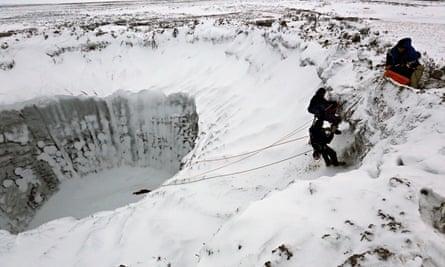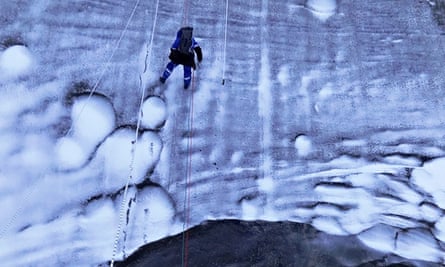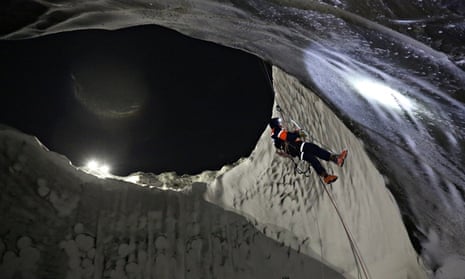A Russian research team including scientists, a medic and a professional climber has descended to the bottom of a giant sinkhole in northern Siberia in an attempt to discover its origins.
The 35-metre deep sinkhole was discovered in July after an unexplained eruption that flung soil and rock 120 metres from the site. It was initially thought it might be related to fossil fuel exploration, as it is 25 miles from the largest gas field in the region, but after a radar scan of the ground the team said it was most likely to be due to natural causes that would require further research.
The sinkhole was discovered and filmed from a helicopter this summer by oil and gas technicians on the Yamal peninsula, which in the language of its indigenous inhabitants who live north of the Arctic circle means end of the world. Two more unexplained sinkholes have since emerged in the far north of Russia.

The first scientific expedition to the Yamal sinkhole took place in July, but researchers were unable to climb inside and take samples until the sides of the hole and the water on the bottom froze.
The sinkholes have sparked widespread speculation about the causes, ranging from shale gas explosions to meteorite strikes. The regional government has previously said scientists suspect the sinkhole “burst like a bubble” due to gas in the ground.
Vladimir Melnikov, an academic with the Russian Academy of Sciences, blamed the sinkhole on global climate change, arguing that the thawing of frozen rock layers had released a burst of shale gas. Marina Leibman, a researcher with the RAS, said after a previous expedition that the eruption was due to “a buildup of pressure during the freezing and changing volume of certain cavities that held reserves of marsh gas [methane]”.

Anton Sinitsky, a geologist for the Russian energy giant Gazprom, theorised after the latest expedition that the sinkhole was caused by the same gas hydrates that have been blamed for the anomalies observed around the Bermuda Triangle in the Atlantic Ocean, the newspaper Komsomolskaya Pravda reported.
Like the Bermuda Triangle, the Yamal peninsula has long been a hot spot of unexplained occurrences, with locals often reporting sightings of the abominable snowman.

Comments (…)
Sign in or create your Guardian account to join the discussion